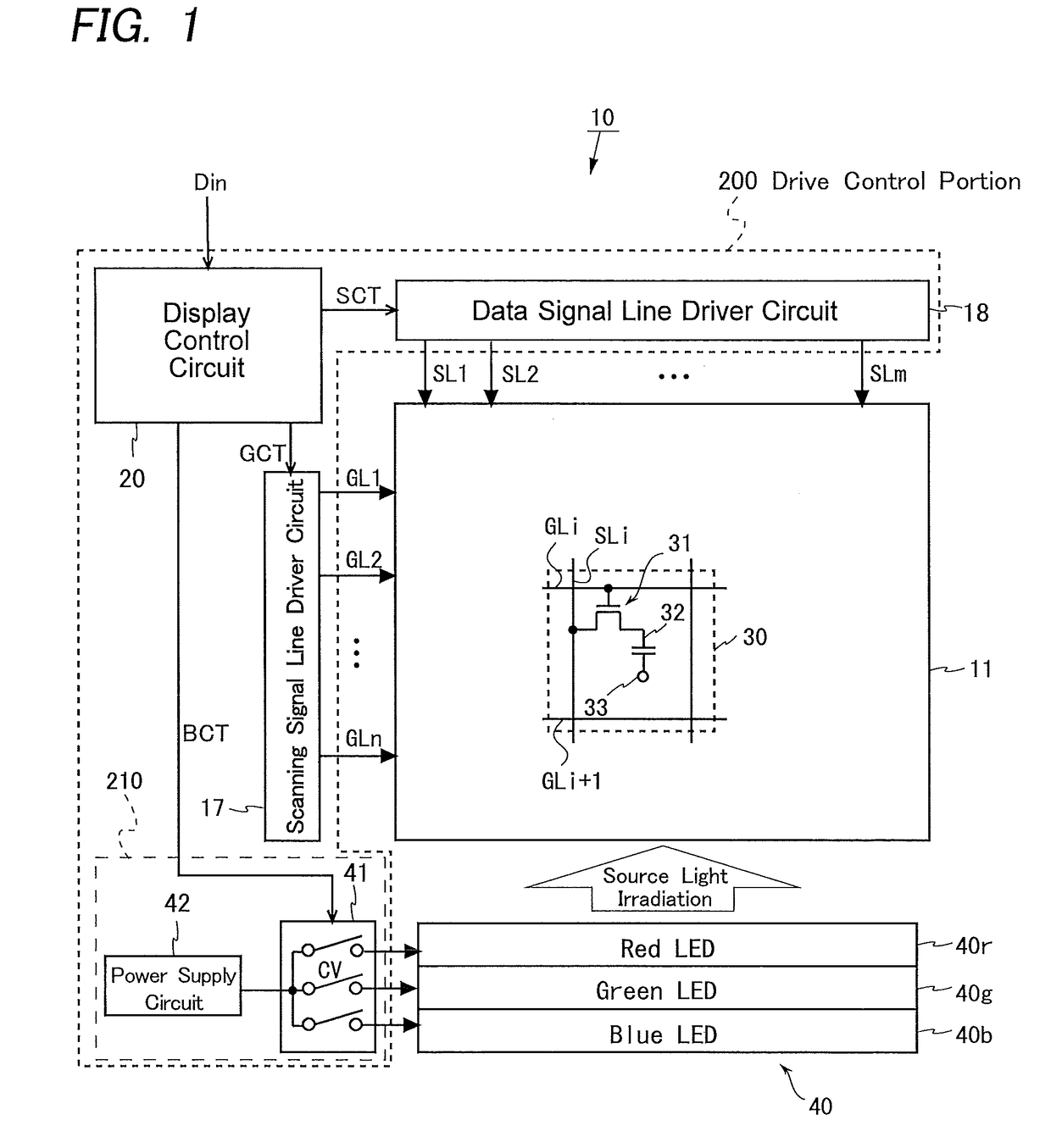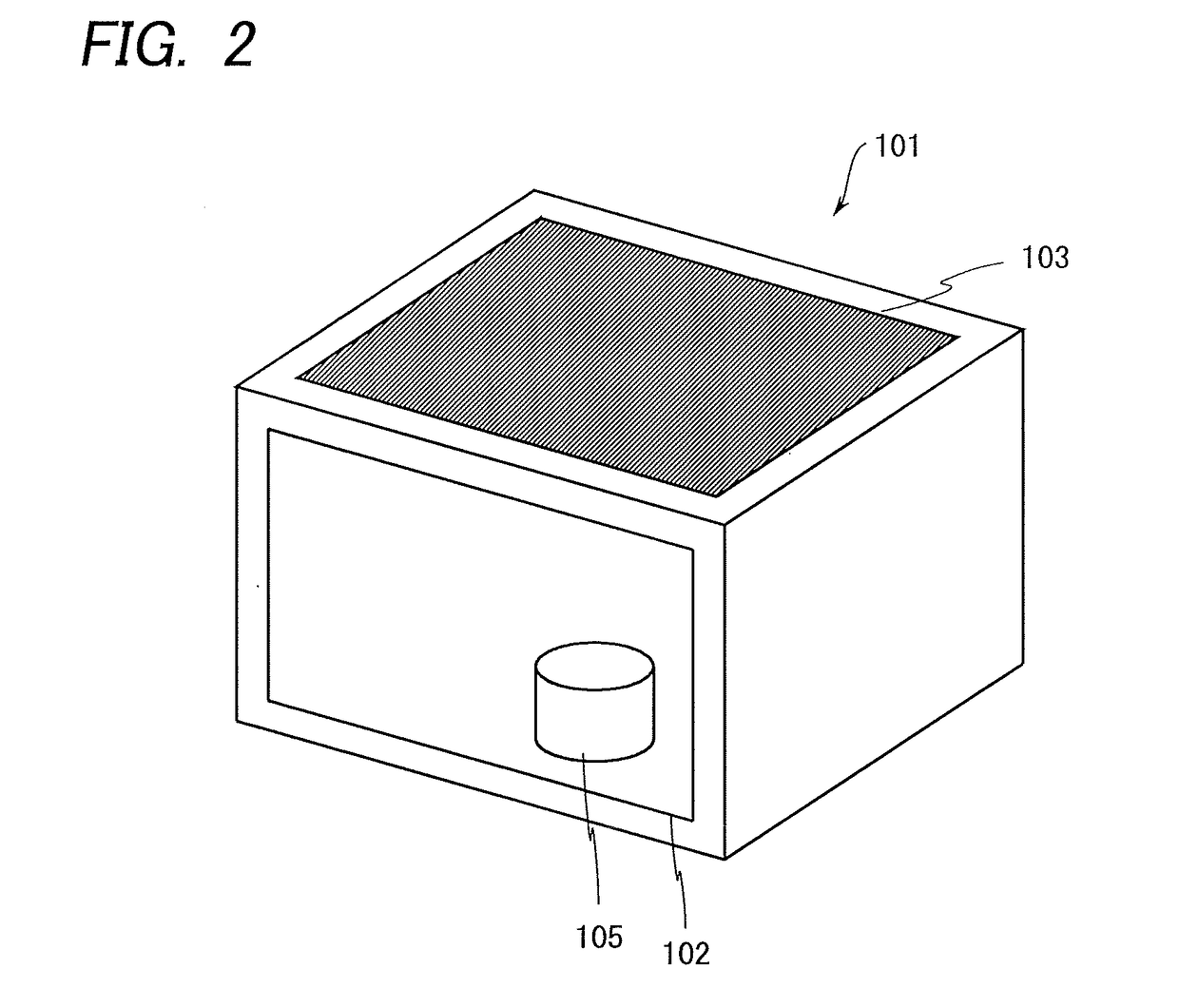Color image display device and color image display method
a display device and color image technology, applied in static indicating devices, non-linear optics, instruments, etc., can solve the problems of low light-use efficiency and maximum luminance of the liquid crystal display device using color filters, low light-use efficiency and low light-use efficiency when compared to the simple rgb subframe system, and decrease in the range of color reproduction. , to achieve the effect of increasing the transparent display area of the image to be displayed, reducing display color saturation, and inhibi
- Summary
- Abstract
- Description
- Claims
- Application Information
AI Technical Summary
Benefits of technology
Problems solved by technology
Method used
Image
Examples
first embodiment
1. First Embodiment
[0102]
[0103]FIG. 1 is a schematic block diagram illustrating a general configuration of a field-sequential liquid crystal display device according to a first embodiment of the present invention. The liquid crystal display device 10 displays a color image by a field-sequential system in which one frame period is divided into three or four subframe periods (also referred to as “field periods”). The liquid crystal display device 10 includes a liquid crystal panel 11, which serves as a display panel, a display control circuit 20, a scanning signal line driver circuit 17, a data signal line driver circuit 18, a light source unit 40, and a light source driver portion 210 including a switch group 41 and a power supply circuit 42. Note that the display control circuit 20, the scanning signal line driver circuit 17, the data signal line driver circuit 18, and the light source driver portion 210 (i.e., the switch group 41 and the power supply circuit 222) constitute a drive...
second embodiment
2. Second Embodiment
[0232]Next, a field-sequential liquid crystal display device according to a second embodiment of the present invention will be described. The present embodiment differs from the first embodiment in the target color determination processing by the input data judgment portion in the control drive portion, but the other features are the same as in the first embodiment. Accordingly, in the following, elements of the present embodiment that are the same as or correspond to the elements of the first embodiment are denoted by the same reference characters and any detailed descriptions thereof will be omitted.
[0233]
[0234]In the present embodiment, the input data judgment portion 202 determines a target color TCk (where k=1 to L) as below. The present embodiment and the first embodiment are the same in that as a target color candidate TCC=(Rt, Gt, BL), a transparent color that satisfies formulas (8) to (11) is provided in the case of the housing-case-type transparent disp...
PUM
 Login to View More
Login to View More Abstract
Description
Claims
Application Information
 Login to View More
Login to View More - R&D
- Intellectual Property
- Life Sciences
- Materials
- Tech Scout
- Unparalleled Data Quality
- Higher Quality Content
- 60% Fewer Hallucinations
Browse by: Latest US Patents, China's latest patents, Technical Efficacy Thesaurus, Application Domain, Technology Topic, Popular Technical Reports.
© 2025 PatSnap. All rights reserved.Legal|Privacy policy|Modern Slavery Act Transparency Statement|Sitemap|About US| Contact US: help@patsnap.com



